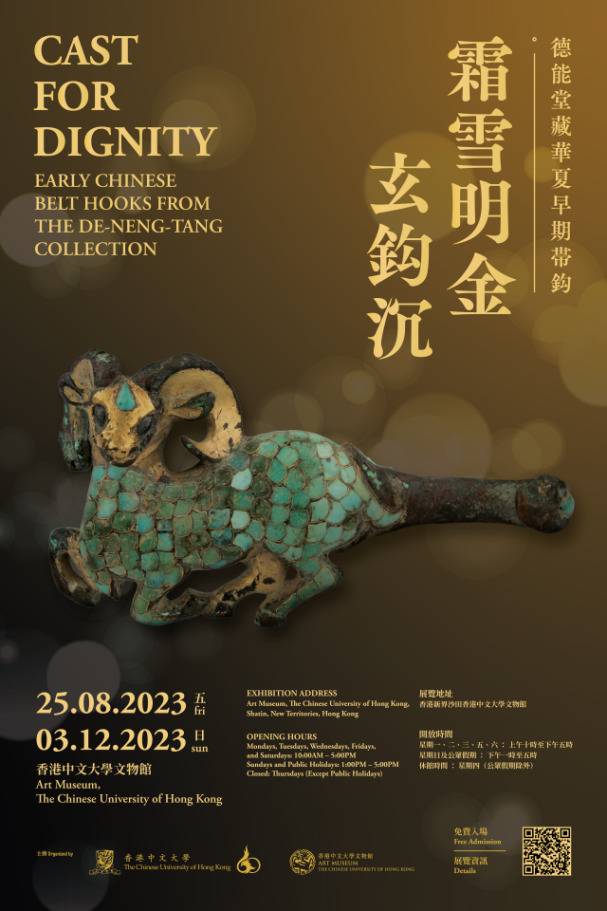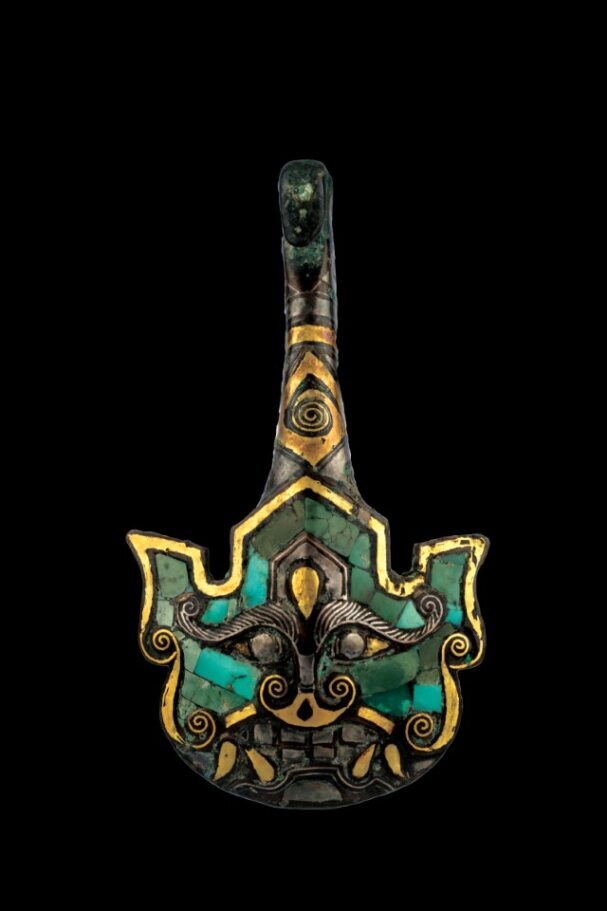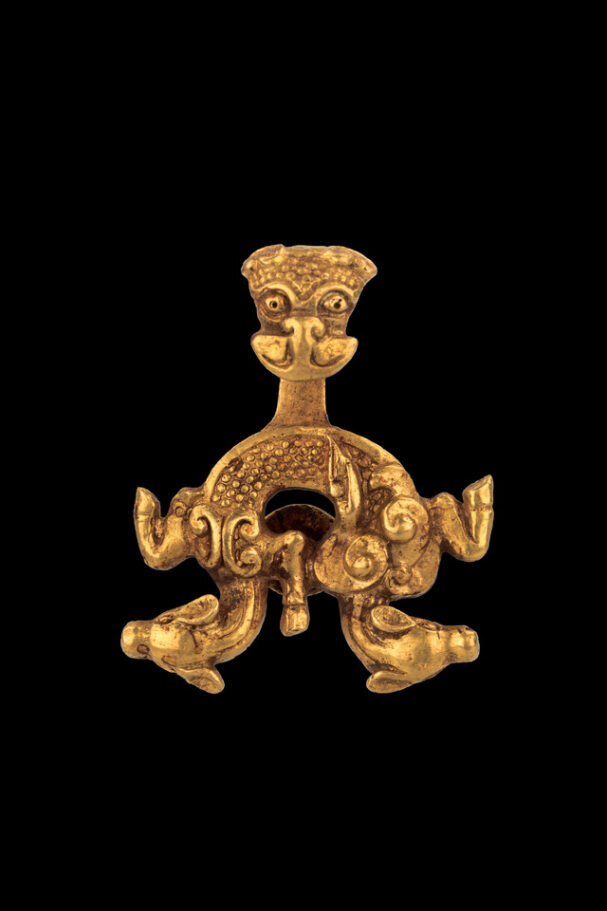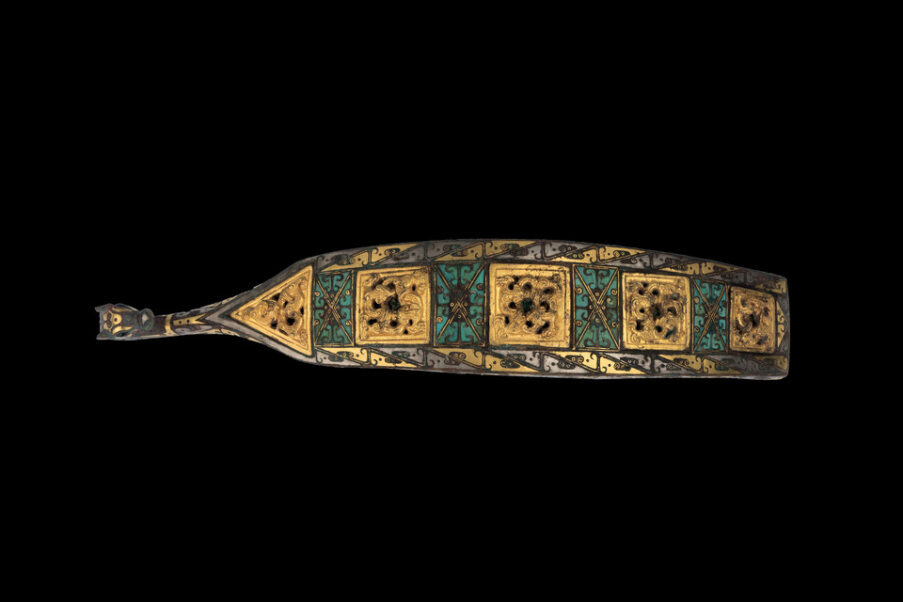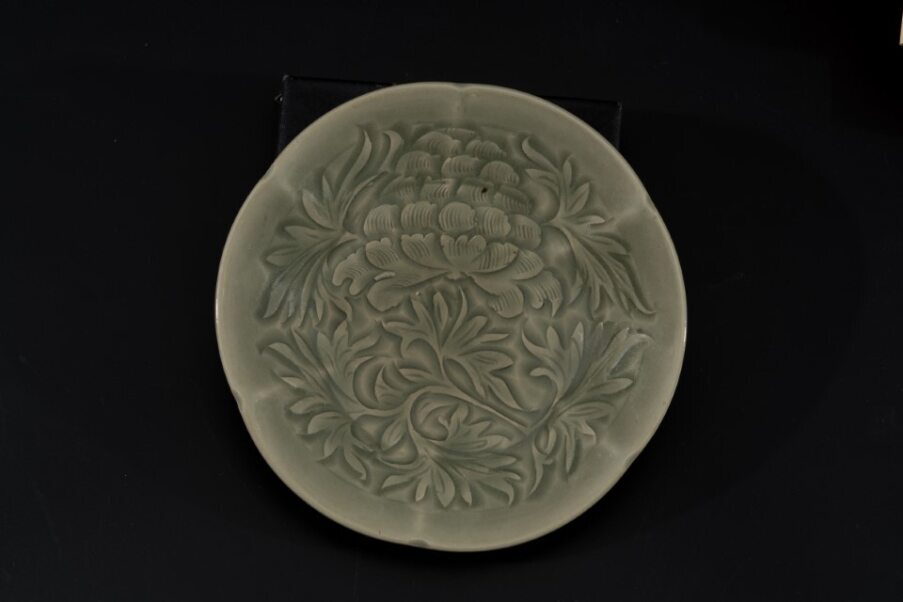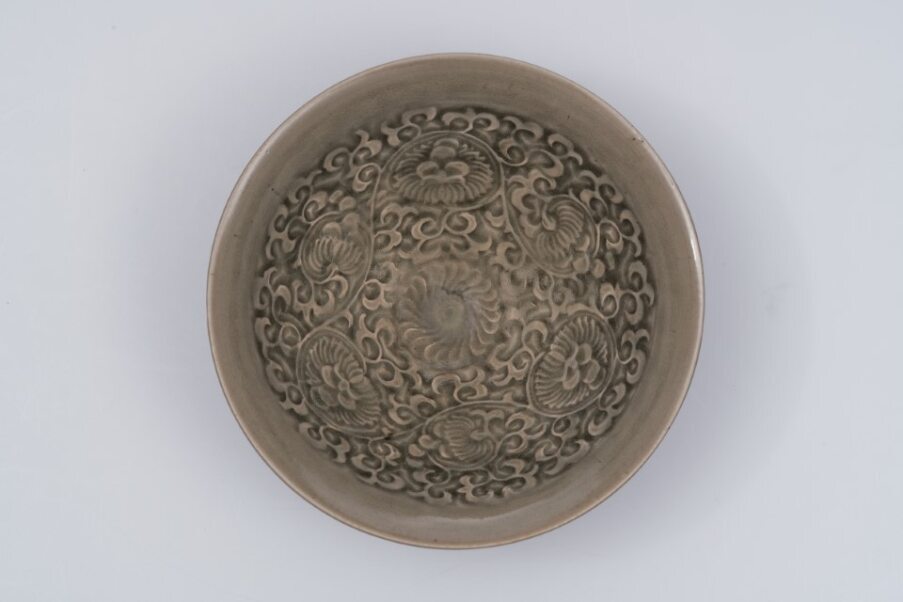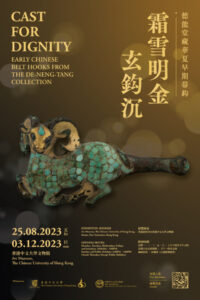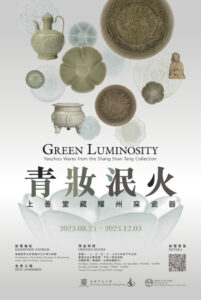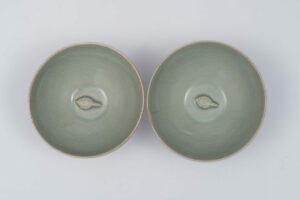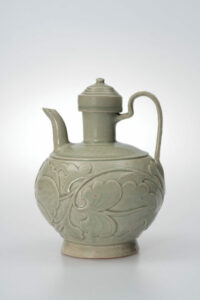CUHK
News Centre
CUHK Art Museum exhibitions showcase Belt Hook and Yaozhou Wares collections
The Art Museum of The Chinese University of Hong Kong (CUHK) presents two special exhibitions, Cast for Dignity: Early Chinese Belt Hooks from the De-Neng-Tang Collection and Green Luminosity: Yaozhou Wares from the Shang Shan Tang Collection, from now until 3 December 2023. All members of the public are welcome, and admission is free.
Cast for Dignity: Early Chinese Belt Hooks from the De-Neng-Tang Collection
This exhibition features over 30 belt hooks from the De-Neng-Tang Collection. Visitors can witness the creative spirit and refined techniques of the early craftsmen in eight sections: “The Tao of the Belt Hook”, “Cast in Gold and Silver”, “Inlaid with Gold and Silver”, “Made of Iron”, “Set with Jewels”, “Human and Beast”, “The Art of the Belt Hook” and “The Great Synthesis”. An embodiment of practicality and extraordinary craftsmanship, belt hooks were not only an accessory for the ancient Chinese to fasten their belts but also a symbol of aesthetic taste and social status.
To glimpse these hooks is to view a world full of all creatures, great and small. Belt hooks were made with a combination of advanced metalwork techniques, which included interlock casting, soldering, hammering and various types of inlaying. With belt hooks as the cultural carrier of the ancient craftsmen’s artistry and spirit, the exhibition aims to provide a new perspective for audiences to experience the intellectual and material wisdom of early China.
CUHK Art Museum’s Exhibition Showcases Yaozhou Wares Collection
Showcasing over 90 pieces of Yaozhou ware from the Shang Shan Tang Collection, the exhibition Green Luminosity: Yaozhou Wares from the Shang Shan Tang Collection is divided into three sections: “The Supreme Green”, “The Pinnacle of Ceramic Craftsmanship” and “Appealing to Refined Taste”. In the first section, to showcase the beauty of the glazes of the Yaozhou wares, items are grouped by glaze colour and ordered by chronology. When selecting display pieces, the curators gave priority to plain items, to highlight the evolution of celadon glaze. “The Pinnacle of Ceramic Craftsmanship” focuses on decorative techniques, including engraving, moulding and carving, which are characteristic of Yaozhou celadon wares. The last section of the exhibition focuses on cultural connotation, using interpretation of the wares’ decorative patterns as an entry point.
The Yaozhou kilns, located about 80 kilometres north of Xi’an, Shaanxi, are a representative large-scale ceramic production site in North China from the Song Dynasty. The celadon wares made there during that era are characterised by beautiful olive-green glaze, gorgeous engraved and incised patterns, and delicate and dense moulded designs and have been highly prized since ancient times. These kilns probably exerted an influence on the glaze colours and firing techniques adopted by the Ru kilns and Jun kilns in the late Northern Song Dynasty.
The Shang Shan Tang collection is one of the few private collections in China focused on Yaozhou ceramic wares. With over 100 pieces, its holdings are not only greatly varied but also of high quality. It includes both classic and extremely rare forms. The Yaozhou wares are primarily celadon-glazed, including sky-blue, olive-green, moon-white and ginger-yellow. Covering the Golden Age of the Yaozhou kilns, from Northern Song Dynasty through the Tang and the Five Dynasties to the Jin, they represent typical Yaozhou celadon glazes from different historical periods. These changes in glaze colour are regarded as representative of developments during the Yaozhou kiln era.
Details of the exhibitions
Cast for Dignity: Early Chinese Belt Hooks from the De-Neng-Tang Collection and Green Luminosity: Yaozhou Wares from the Shang Shan Tang Collection
|
Period: |
From now until 3 December 2023 |
|
Venue: |
Gallery II, Art Museum, CUHK |
|
Opening hours: |
Please visit the museum’s website |
|
Enquiries: |
3943-7416 |
For more details, please visit the museum’s website or Facebook page.
Please download exhibition poster and photos from https://bit.ly/3YEH4Kh.
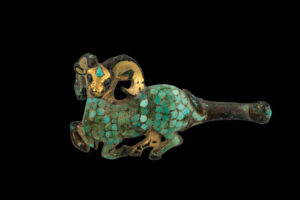
Ram-shaped gilded bronze belt hook with turquoise inlays (De-Neng-Tang Collection). This belt hook is among the exhibition highlights. The adorable beast was vividly cast in a squatting posture, with a gilded head and a body exquisitely inlaid with scale-like turquoise tiles surrounded by gold lines.
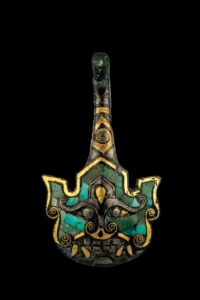
Bronze belt hook with gold, silver and turquoise inlays in the shape of an orc face (De-Neng-Tang Collection). Also a dazzling turquoise-inlaid piece, the orc-shaped hook is decorated with a demigod with rounded eyes, a wide nose and a fanged mouth. It is filled with curved turquoise tiles varying in shape and size but arranged pleasingly. The particularly refined eyebrows of the orc are depicted with a pattern of slanted lines.
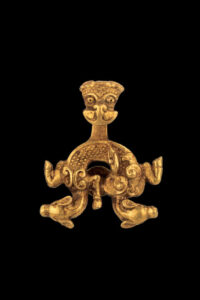
Beast-headed and U-shaped gold belt hook with paired chi dragons (De-Neng-Tang Collection). Another intriguing work is this belt hook, with a design that combines a beast head and a pair of chi dragons organically to form an elegantly curved body. Compared with those made from bronze and jade, gold artifacts are not that commonly seen among excavated materials from the early Bronze Age Central Plains.
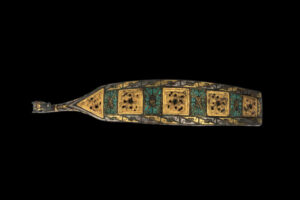
Beast-headed and long-plate-shaped bronze belt hook with gold, silver and turquoise inlays (De-Neng-Tang Collection). The section “The Great Synthesis” features this bronze belt hook inlaid with five gold plaques in high relief and with an openwork design, alternating with four bands of turquoise. It demonstrates an amazing diversity in decorative techniques and is indicative of both the aesthetics and the technical achievements of ancient China.
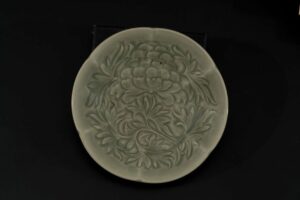
Six-lobed Plate with Engraved Peony Spray Design in Celadon Glaze (Shang Shan Tang Collection). Exhibited in “The Pinnacle of Ceramic Craftsmanship” section, this six-lobed plate presents a six-petal flower's silhouette with a peony spray design inlayed, showcasing delicate craftsmanship.
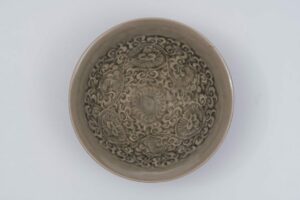
Bowl with Moulded Interlocking Chrysanthemum Scrolls Design in Celadon Glaze (Shang Shan Tang Collection). Yaozhou moulded celadon was exquisite and elegant, dominating the ceramics market. This bowl shows the use of excavated moulds, with an interlocking chrysanthemum scrolls design.


